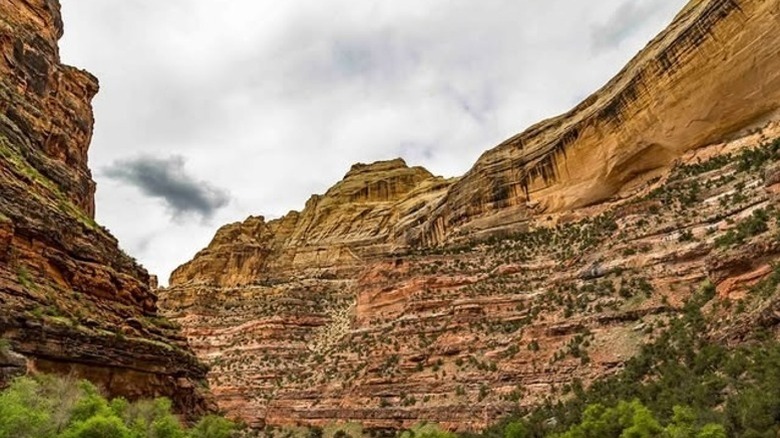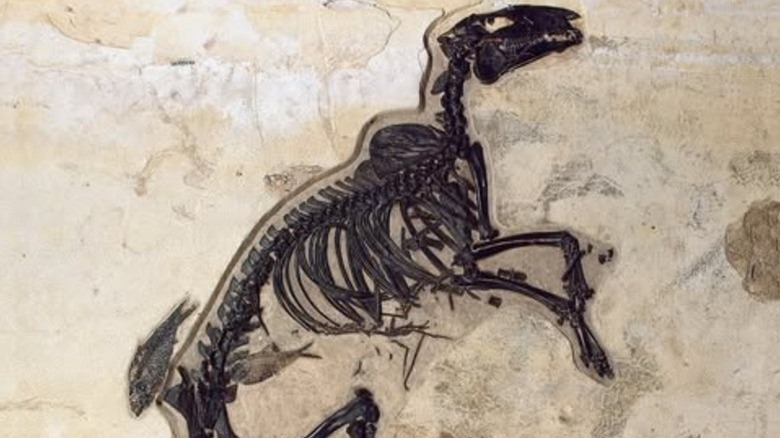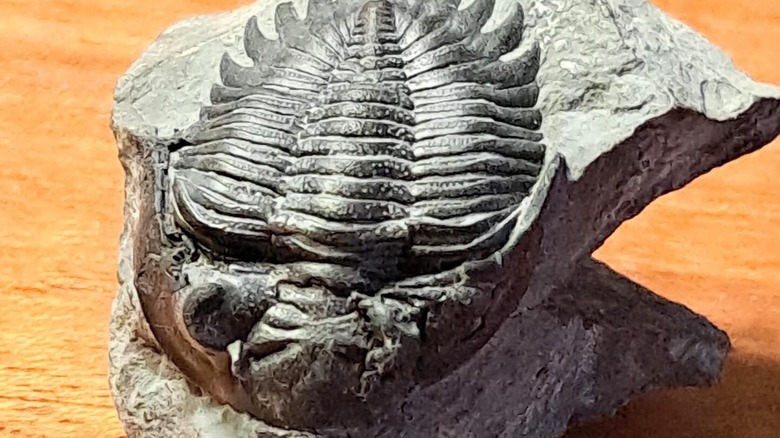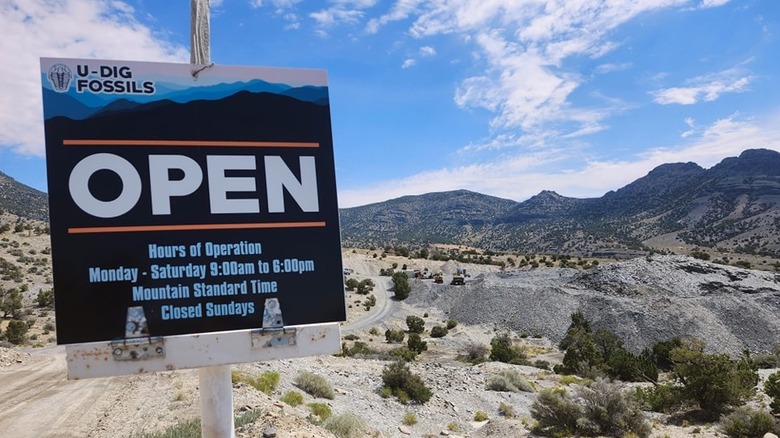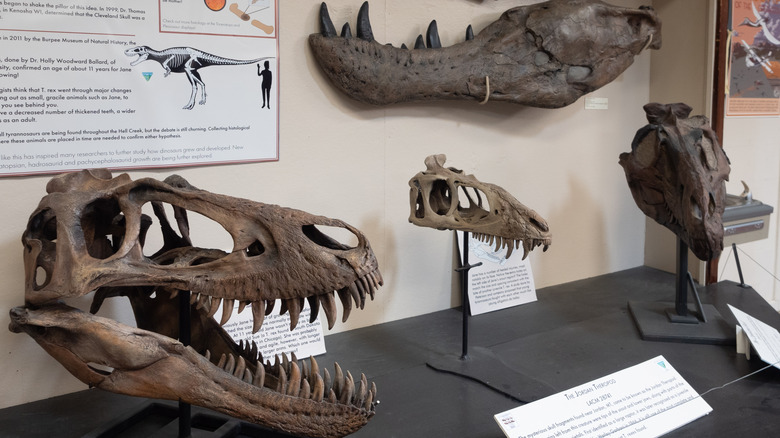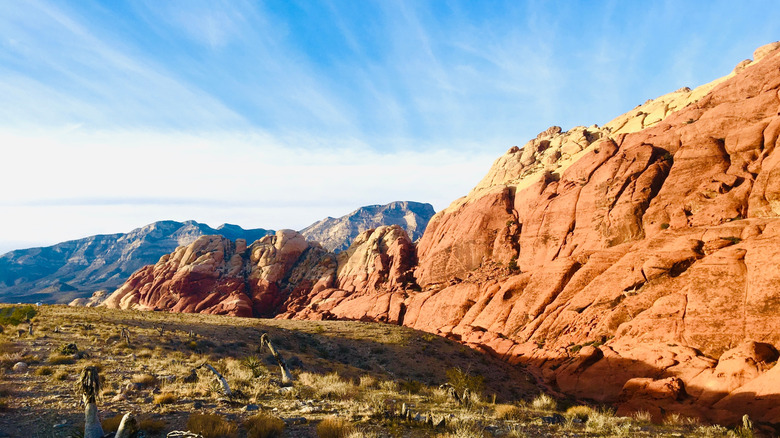10 Best Places To Look For Fossils In The United States
Whether you are a dinosaur enthusiast, a budding archaeologist, or geology buff, the prospect of unearthing prehistoric fossils is always going to be appealing. Luckily, the United States is home to countless fossil hunting sites that allow you to enjoy the great outdoors and indulge in your favorite pastime at the same time.
Whether you want to hunt for giant megalodon teeth or spend a week on an expert-led dino dig, there is a fossil site on this list that will keep you happy. From arthropod-rich sites in New York to petrified trees in Arizona, each individual location offers a unique glimpse into organisms of millenia gone by. From invertebrates from the Cambrian period more than 500 million years ago to fish from the early Cenozoic era a mere 55 million years ago, the amazing history of life on earth is preserved right across the country.
Some of these fossil sites have exhibits for you to enjoy, while others allow you hands-on experience digging for ancient remains and even keeping what you find. Whatever experience you are looking for, there are plenty of exciting scientific days out to be had. Let's dig in and look at 10 great places to look for fossils in the United States.
Badlands National Park, South Dakota
If dinosaurs aren't your main focus in your hunt for interesting fossils, Badlands National Park in South Dakota has a huge number of prehistoric fossils that should keep you happy. Species from over 30 millions years ago — including mammals such as saber-tooth cats and three-toed horses — can be found across the vast landscape, and provide well-preserved insights into life after the dinosaurs departed. One of the largest fossils found in the Badlands National Park is the brontothere. A huge herbivorous mammal similar to a rhinoceros, they died out around 34 millions years ago, likely due to a changing climate.
If it is your first visit to Badlands, the Fossil Exhibit Trail is a great place to start. The trail features a number of exhibits that you are allowed to touch, with displays providing information about each. It is a short 0.25-mile round-trip, so it isn't too strenuous, and is a good way to familiarize yourself with the environment. As well as fossils of extinct creatures, there is plenty of living wildlife to see too, from antelope and deer to bighorn sheep.
As a fossil enthusiast, one big draw of Badlands is the fossil preparation lab. Open in the summer months, this working lab allows you to watch paleontologists preparing fossils and ask questions about what you see. There are also various ranger-led programs and fossil talks that allow you to get expert insights into the huge variety of fossilized remains found in this stunning park.
Dinosaur National Monument, Colorado
When many of us hear the word "fossils," we immediately think of dinosaurs, and if this applies to you, then a trip to the Dinosaur National Monument, Colorado, has to be on your to-do list. You will find an amazing 1,500 fossil exhibits in the Quarry Exhibit Hall embedded in the rock face, allowing you to see them up close. Most of the species in this area are from the late Jurassic period, around 150 — 160 million years ago, and include diplodocus, allosaurus, and apatosaurus, which is often mistaken for brontosaurus.
If you want to see naturally exposed fossils exactly as they were found more than a century ago, you can embark on the Fossil Discovery Trail. The trail is just over a mile long, but if the shuttle bus isn't running, you will need to walk back, too.
The site lies on the border of Colorado and Utah, and stretches across 210,000 acres. Although dinosaurs are obviously the big attraction, there is plenty to learn about the distant past besides the fossils of the "terrible lizards." Thousands of skeletal remains have been found in the park belonging to salamanders, frogs, turtles, and mammals, showing that they lived side by side with their enormous neighbors. There are also prehistoric samples of animal species that still exist today, including clams and mussels. Whether you are a dino-fanatic or a curious explorer, the Dinosaur National Monument will not disappoint.
Fossil Butte National Monument, Wyoming
If you're looking for fossils of the highest quality, a trip to Fossil Butte National Monument, Wyoming, is a journey worth taking. Known as America's Aquarium in Stone, it contains some of the best-preserved marine fossils in the world, some dating back 52 million years.
One of the main reasons the fossils are so well preserved is the layer of low-oxygen water at the bottom of the lake. This meant that dead creatures that fell to the bottom were largely undisturbed by scavengers from near the surface, allowing them to be covered by aquatic plants that held them in place. Over time, layers of sediment compressed the remains and eventually left behind the fossils with extraordinary detail that we can see today. You will find more than 2,000 fossil specimens throughout the exhibits, including fish, turtles, insects, and plants.
At Fossil Lake, you can take a trip back in time and take a virtual look at how these aquatic species may have looked during the Eocene era. You can use the touch screen to select a fish to see it swim and find out more about it. In the summer, you can join their Fossil Quarry program and experience first-hand the thrill of finding and preparing fossils.
Peace River, Florida
To spend a leisurely day sifting through gravel beds looking for fossilized remains, make your way to Peace River, Florida. Depending on what you are looking for, you may need a permit, but at only $5 a time, it's worth it to have the chance to take home your very own prehistoric treasure. For plants or invertebrates such as mollusks and sea urchins, you don't need a permit, and shark teeth are also exempt. For vertebrates, though, you will need to head to the Florida Museum of Natural History to get your reasonably priced permit.
The knowledge that searching at one of the best places to find shark teeth doesn't require a permit is exciting, as they are one of the most abundant fossil types in Peace River. Since Florida was underwater for millions of years during the Cretaceous period, sediment that appeared once the water level fell trapped the marine fossils, including those of the Megalodon sharks, and preserved them until modern times.
To go fossil hunting in Peace River, be prepared to get wet! There are two main ways to search: Hire a kayak or canoe, or simply wade in from one of the entrance points at the side of the river. Either way, to start your fossil hunt, you will need to sift the bottom of the river. Bear in mind that as well as ancient creatures, there are lots of living species in the river, too, and they won't want to be disturbed. Gators and snakes could be particularly hostile, so keep your eyes peeled, and give them a wide berth.
Petrified Forest National Park, Arizona
To see the wonder of 200 million-year-old fossilized trees, take a visit to Petrified Forest National Park in Arizona. The forest existed during the Triassic period, and the park gives you a rare opportunity to see plants and trees that were thriving during the "Dawn of the Dinosaurs. "
The petrified fossils in the park is made of huge crystals of quartz with a full spectrum of colors within. These once green and vibrant trees have been buried over the centuries by volcanic ash and sediment, with silica and other minerals replacing the carbon within the wood and eventually creating the colorful fossils we can now see. As well as the famous trees, the park also has fossilized specimens of ferns, conifers, and invertebrates such as snails and crayfish.
For an up-close experience of paleontology in action, the park runs a Museum Demonstration Lab on Wednesdays, Thursdays, and Fridays, which allows you to watch through the window as experts prepare fossils from the national park. This interactive experience allows you to watch the microscope feed on a TV and ask questions of the scientists through a speaker.
Westmoreland State Park, Virginia
If you fancy combining your love of fossils with outdoor adventure, Westmoreland State Park, Virginia, is the place to be. Running along the edge of the Potomac River, with gorgeous cliffs towering above, you can enjoy some amateur fossil hunting in a beautiful location.
Megalodon teeth are a common find here, and it is no wonder. As the largest shark to ever have lived, this enormous prehistoric predator had more than 250 teeth! The name megalodon actually means "large tooth," and some specimens can be up to 7 inches long, so finding one of these could be a huge boon for fossil lovers.
Gigantic sharks are not the only fossils present here, and the Discovery Center has plenty of other specimens for you to check out. You can also join a ranger during scheduled fossil quests, allowing you to ask questions to discover more about the history of Fossil Beach and the prehistoric remains that have been found there. Beyond fossil hunting, the park offers plenty of outdoor activities including paddleboarding and kayaking, so it is a great opportunity to indulge in a bit of archeology as part of a larger trip.
Penn Dixie Fossil Park, New York
For a hands-on experience in archaeology, a trip to Penn Dixie Fossil Park in New York is a must. Containing prehistoric rocks from the Devonian period more than 350 million years ago, the site stretches across 54 acres, and you can keep whatever you find!
The area of the quarry in Western New York, just south of Buffalo, was previously under water, and was filled with trilobites, a type of prehistoric arthropod that were killed out during the mass extinction at the end of the Permian period that killed the majority of life on earth. Trilobites are the most common fossil unearthed at Penn Dixie, but there are other specimens to be found too.
In 2018, Penn Dixie Fossil Park gained the Guinness World Record for the largest fossil dig, and each year you have the chance to take part in their annual Dig with the Experts event, where you can spend a weekend digging for fossils alongside experienced archaeologists. Even if you don't make it along to this event, there are guided tours and hands-on experiences throughout the year that allow amateur fossil enthusiasts of all ages to bring a bucket and see if they can take home a little bit of history.
U-Dig Fossils, Utah
U-Dig Fossils in Utah describe their site as "one of the most robust Cambrian fossil formations on Earth," so if you want to get some hands-on fossil hunting experience that has a high chance of finding some hidden treasure, you should add it to your wish list. The site dates back to the Cambrian period, which was part of the Paleozoic era 500 million years ago.
This period was when trilobites are thought to have first appeared, and the arthropods can be found in abundance at this site. Since U-Dig allows you to keep whatever you find on-site, this is an excellent opportunity to add to your home fossil collection. The quarry offers archeology opportunities for adults and children (under 6s are free) and you can choose to spend 2 hours, half a day, or a full day exploring the expansive site.
U-dig Fossils also offer a unique at-home experience. If you cannot make it along to the site, they can ship trilobite shale to your home along with clear instructions on how to split it and retrieve the fossils within. Each shipment is guaranteed to have at least one trilobite fossil inside, making this a novel and exciting experience for any fossil enthusiast.
Hell Creek Formation, Montana
As dinosaur sites go, Hell Creek Formation in Montana is up there with the best of them. Tyrannosaurus Rex and triceratops have both been found there, along with a wide variety of prehistoric mammals, plants, and amphibians. The rocks in the area date back to the Cretaceous period around 65 million years ago, and fossils from some of the earliest primates have also been found.
Unlike the other sites on this list, the Hell Creek Formation is not routinely open to the public, but there are ways that you can visit this world-famous site. For keen fossil hunters, Hell Creek Fossils runs a residential, week-long public dig that allows members of the public to take part in hands-on archaeological exploration, under close guidance of a team of experts. This is a superb opportunity to uncover genuine dinosaur remains and learn excavation techniques from experienced archaeologists. The week-long experience replicates the work of real archaeologists and can be exhausting in the hot, dry conditions, but if digging up dinosaur bones is on your bucket list, it is an opportunity not to be missed.
Red Rock Canyon, Nevada
Located just west of Las Vegas is Red Rock Canyon National Conservation Area, an expansive part of the Mojave Desert that is rich in prehistoric fossils. Not to be confused with Red Rock Canyon State Park in California, where some scenes from "Jurassic Park" were filmed, the Nevada site has recent dinosaur claims of its own. Since 2011, various dinosaur tracks have been discovered at the site. They are thought to be fossil imprints from two-footed carnivorous dinosaurs, and are still being researched by paleontologists.
The dinosaur tracks are off the beaten paths in the Red Rock Canyon and are not advisable for visiting due to the potential dangers of the area; however, the discovery has drawn interest from fossil enthusiasts who visit the site, eager to spot some prehistoric specimens themselves. Aside from the exciting discovery of the dinosaur tracks, there are plenty of other remains to be found, particularly marine species, since much of the area was previously underwater. Coral, sponges, and crinoids — a type of marine invertebrate that originated about 300 million years before dinosaurs — can all be found in the limestone rocks. Fossils need to be left where they are, but you can take some great photos for your collection.


